LG Gram 17 (2020) review: Do it for the Gram
Not the fastest performer, but this plus-sized laptop has a fantastic screen and is astonishingly light
-
+
Great screen
-
+
Incredibly lightweight
-
+
Good selection of ports
-
-
Slightly underwhelming performance

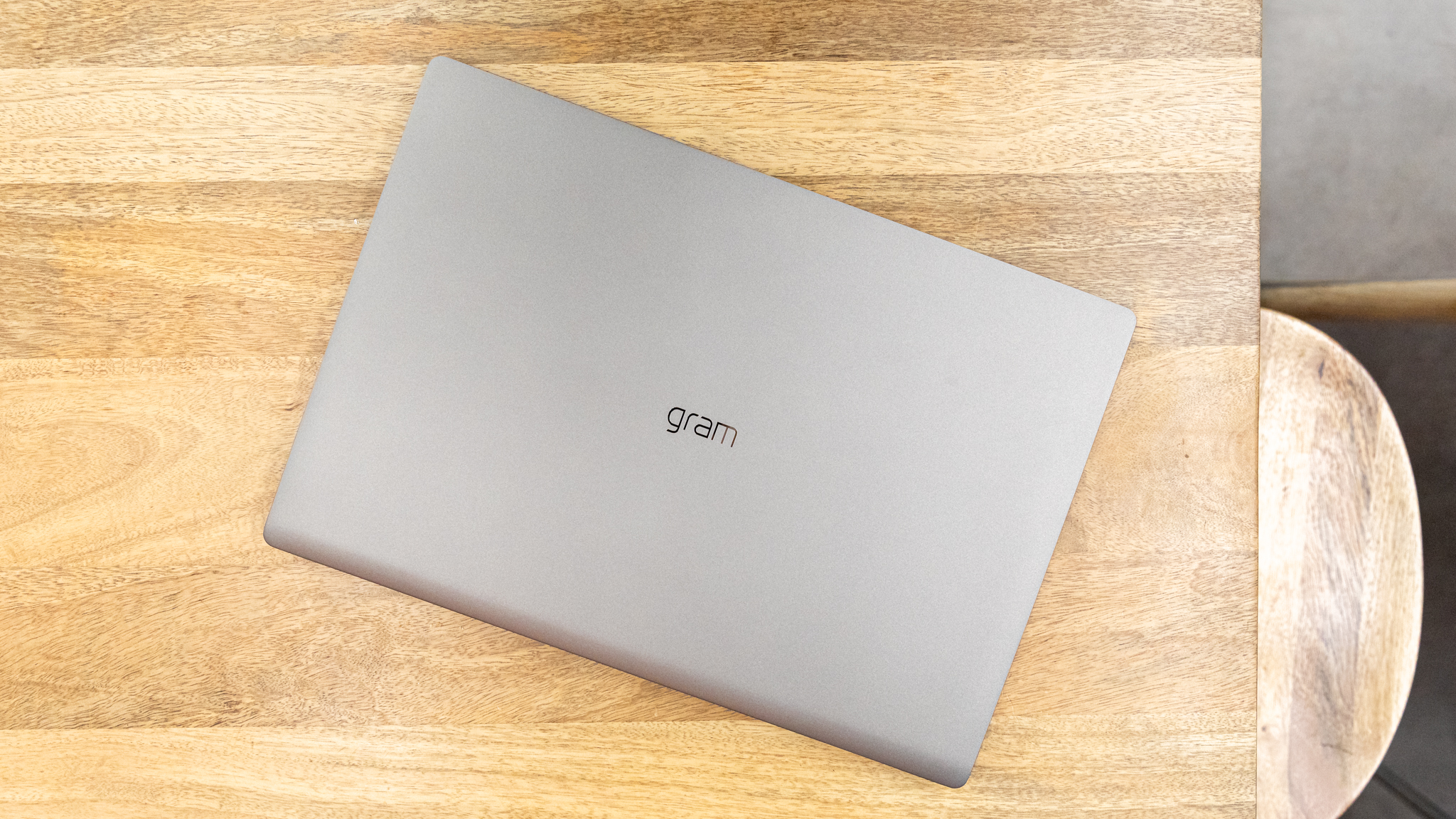
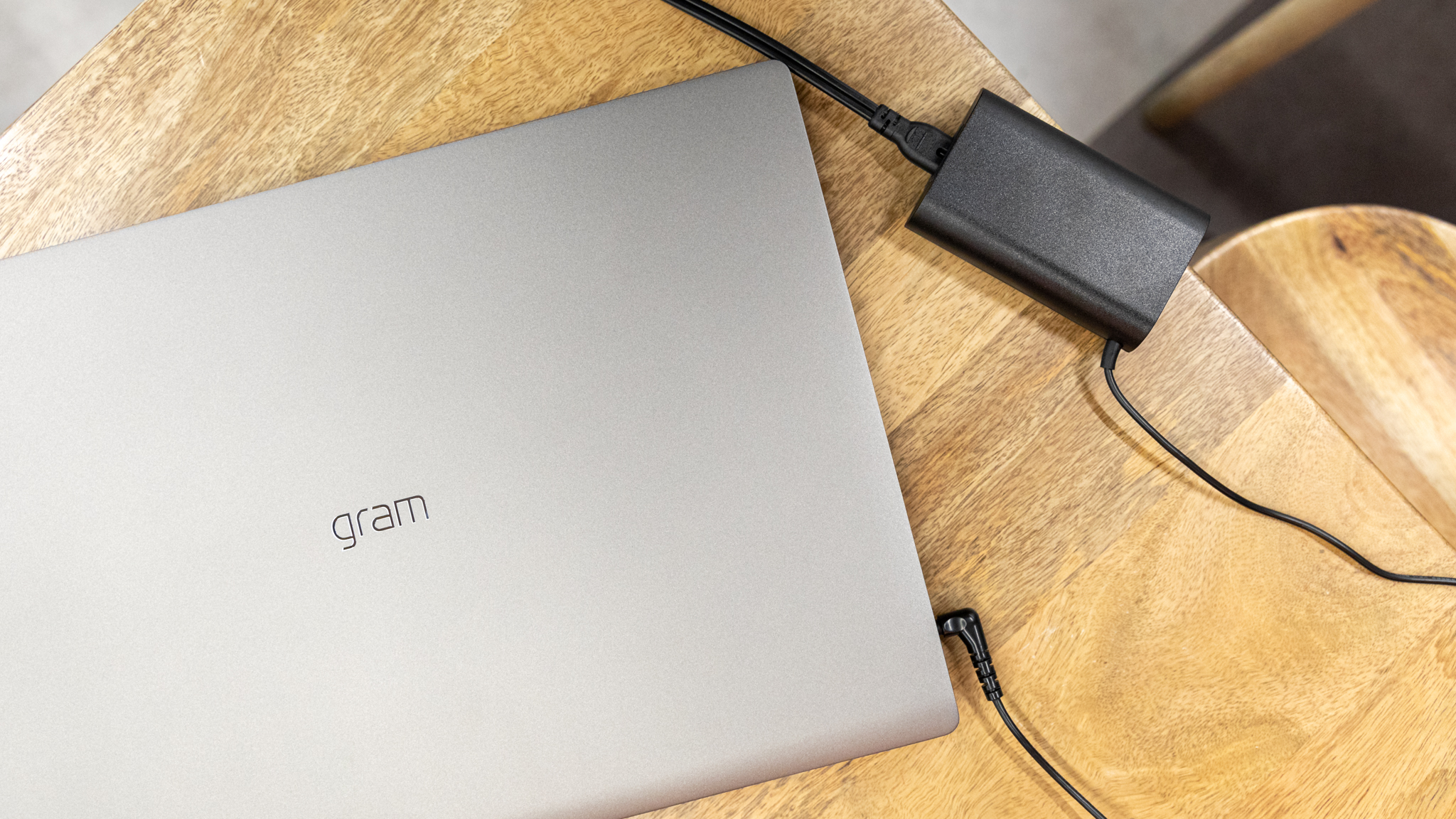
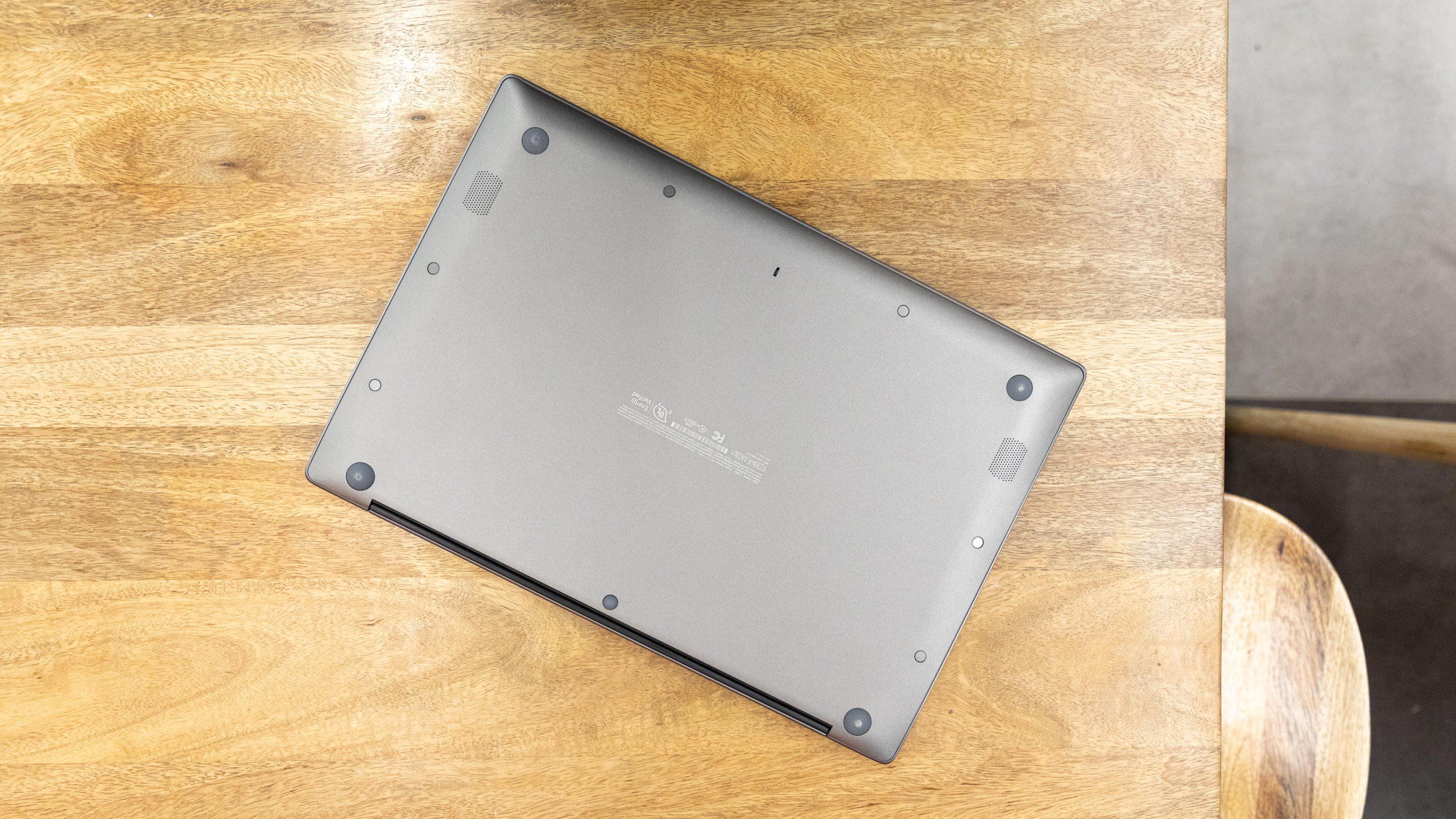
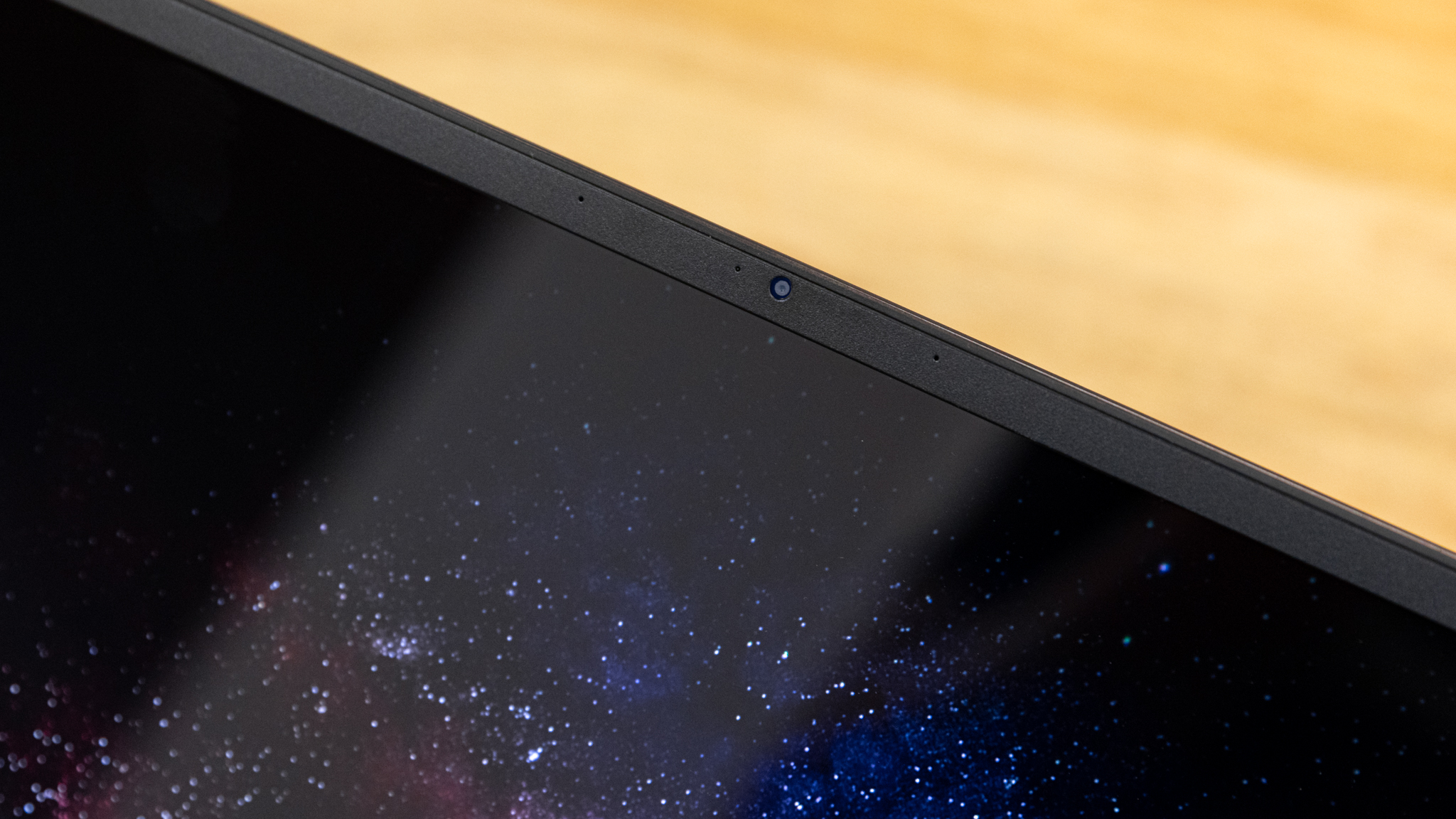
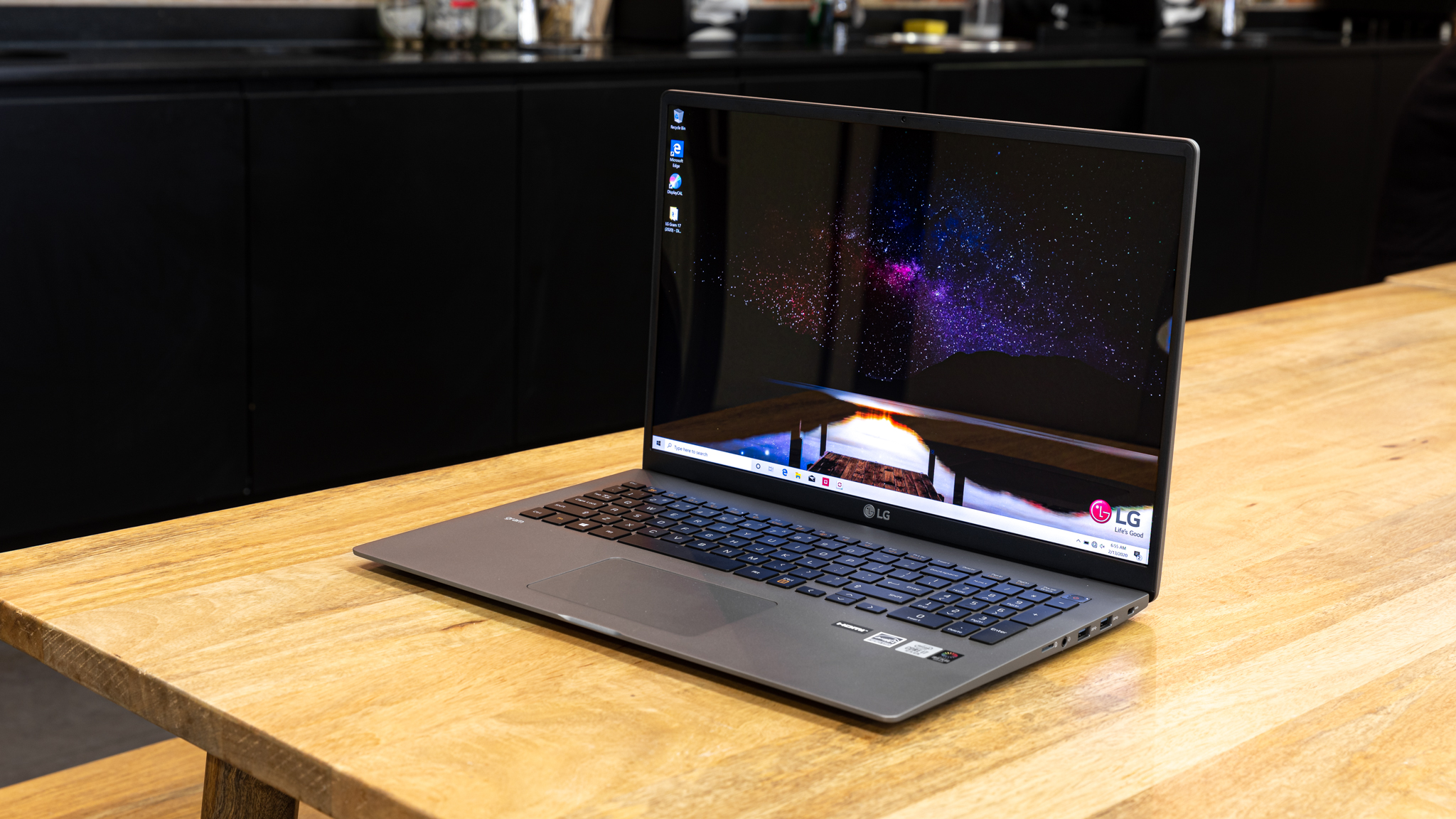
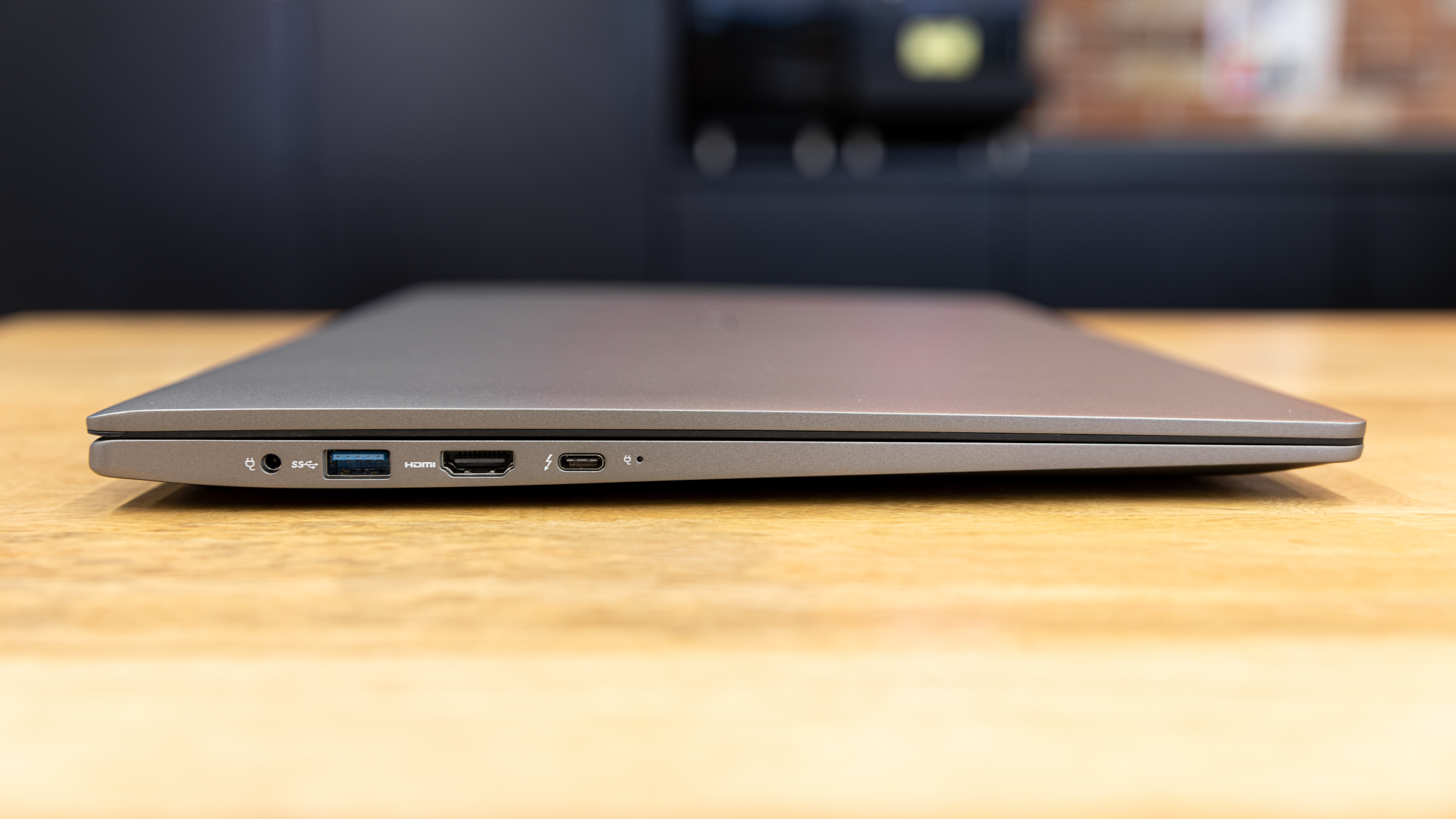
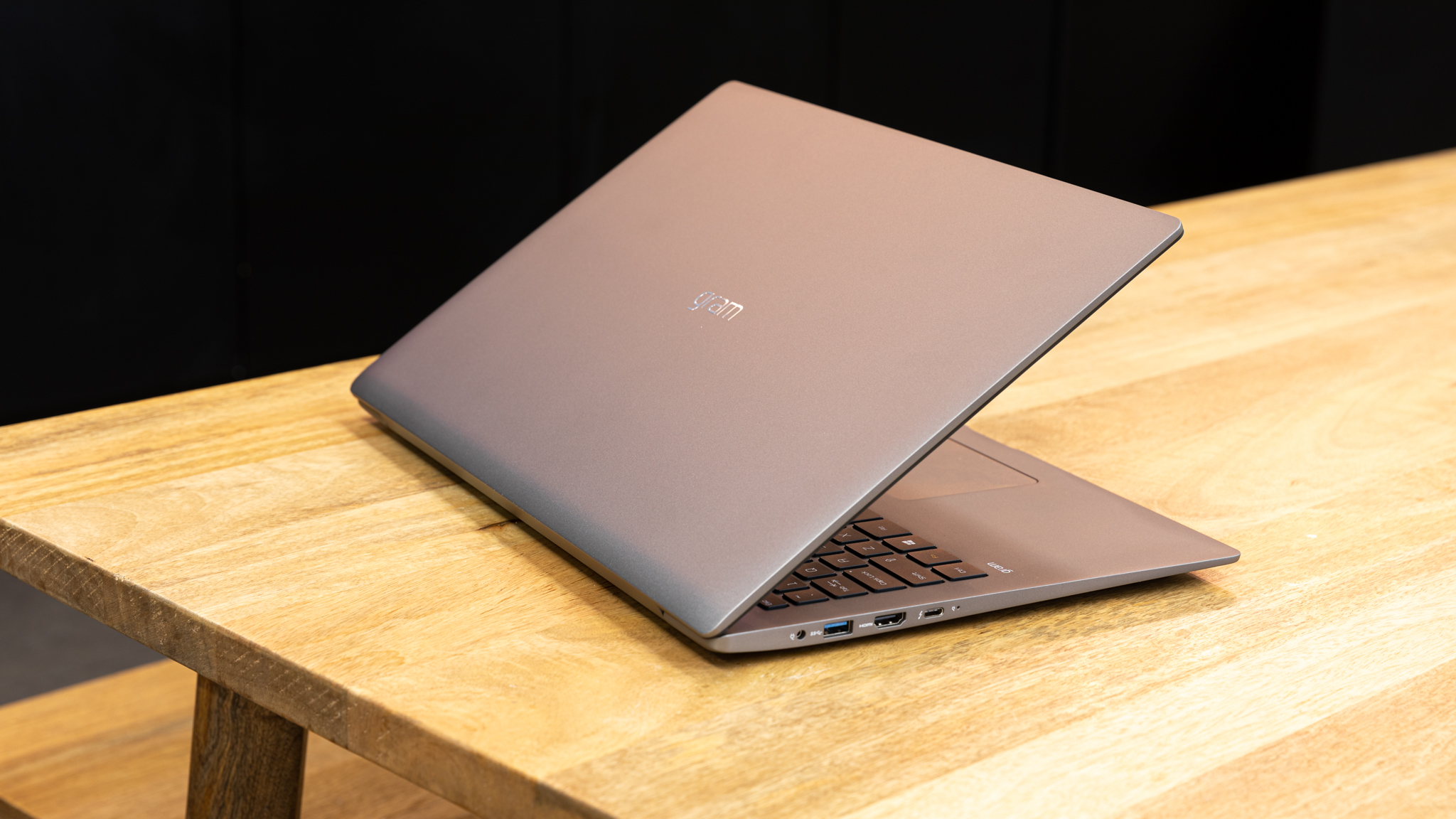
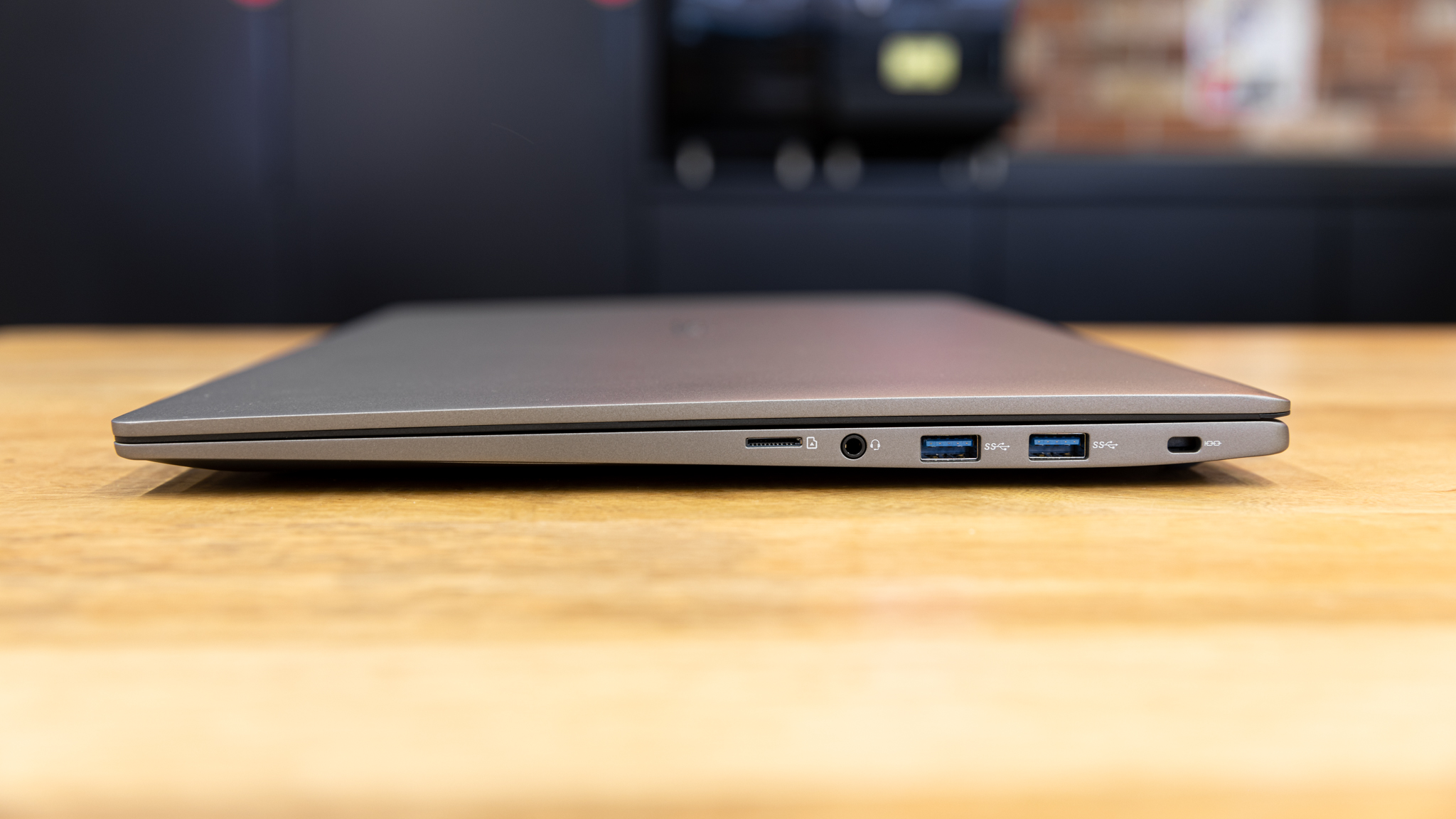

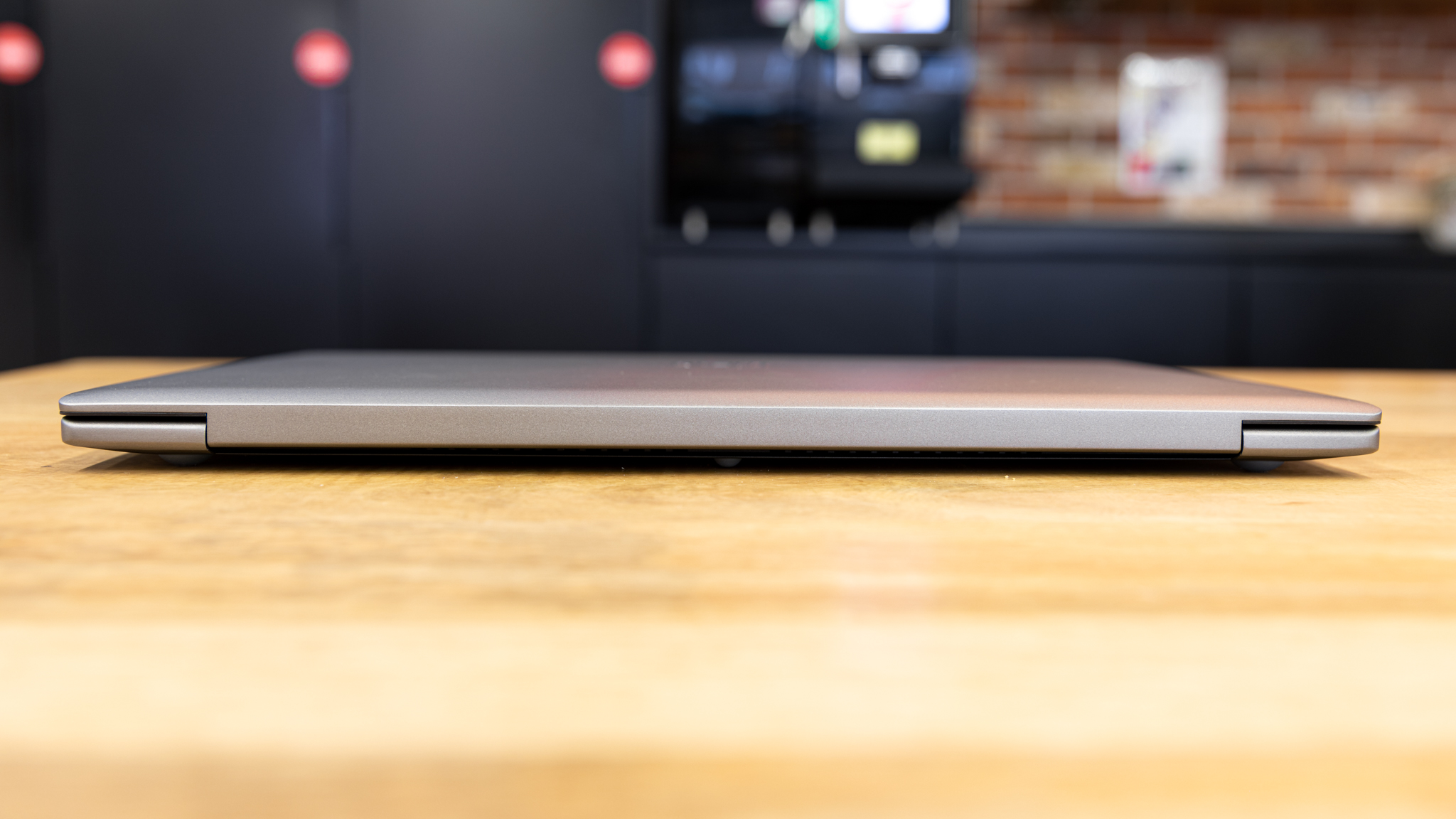
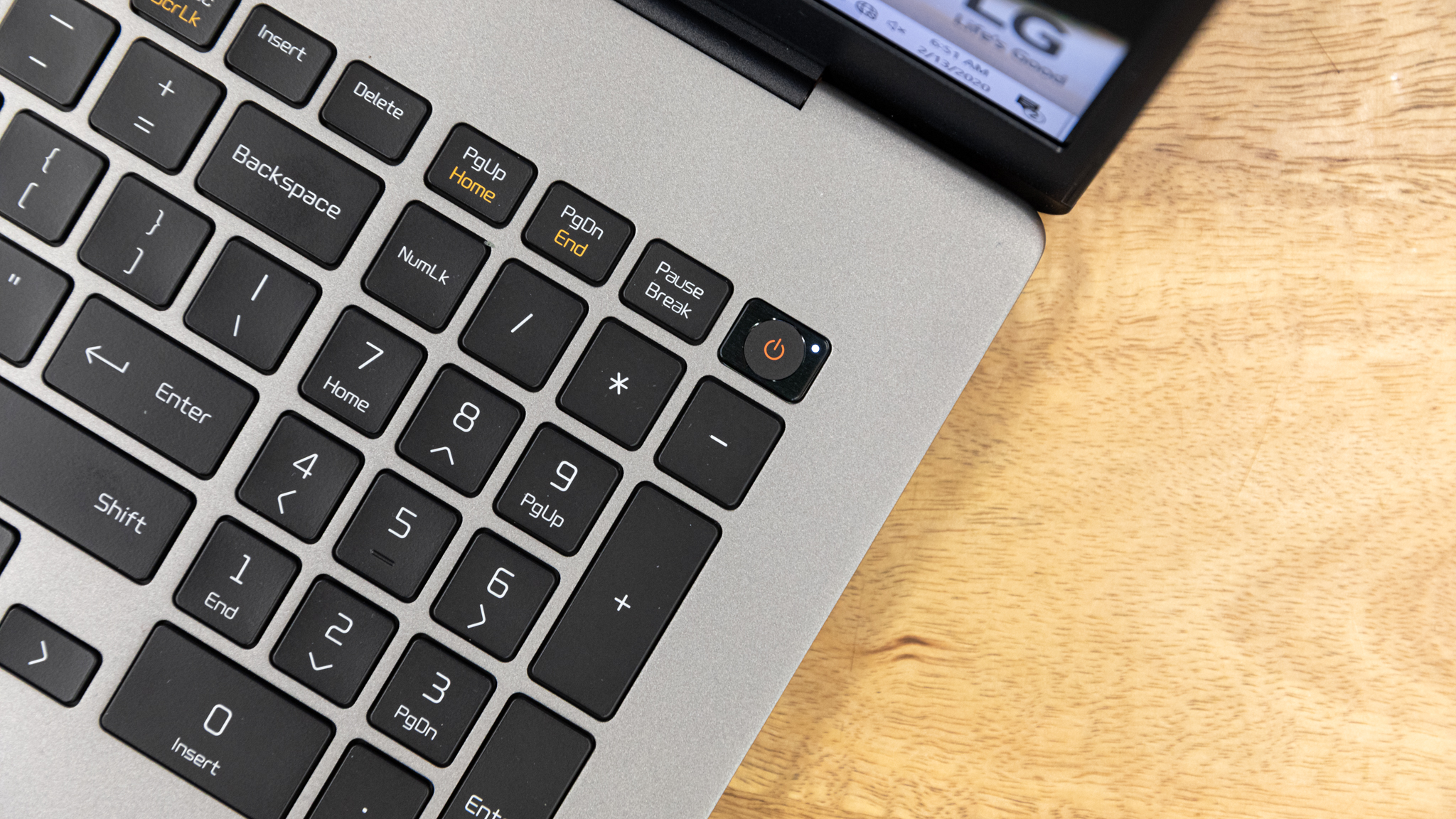
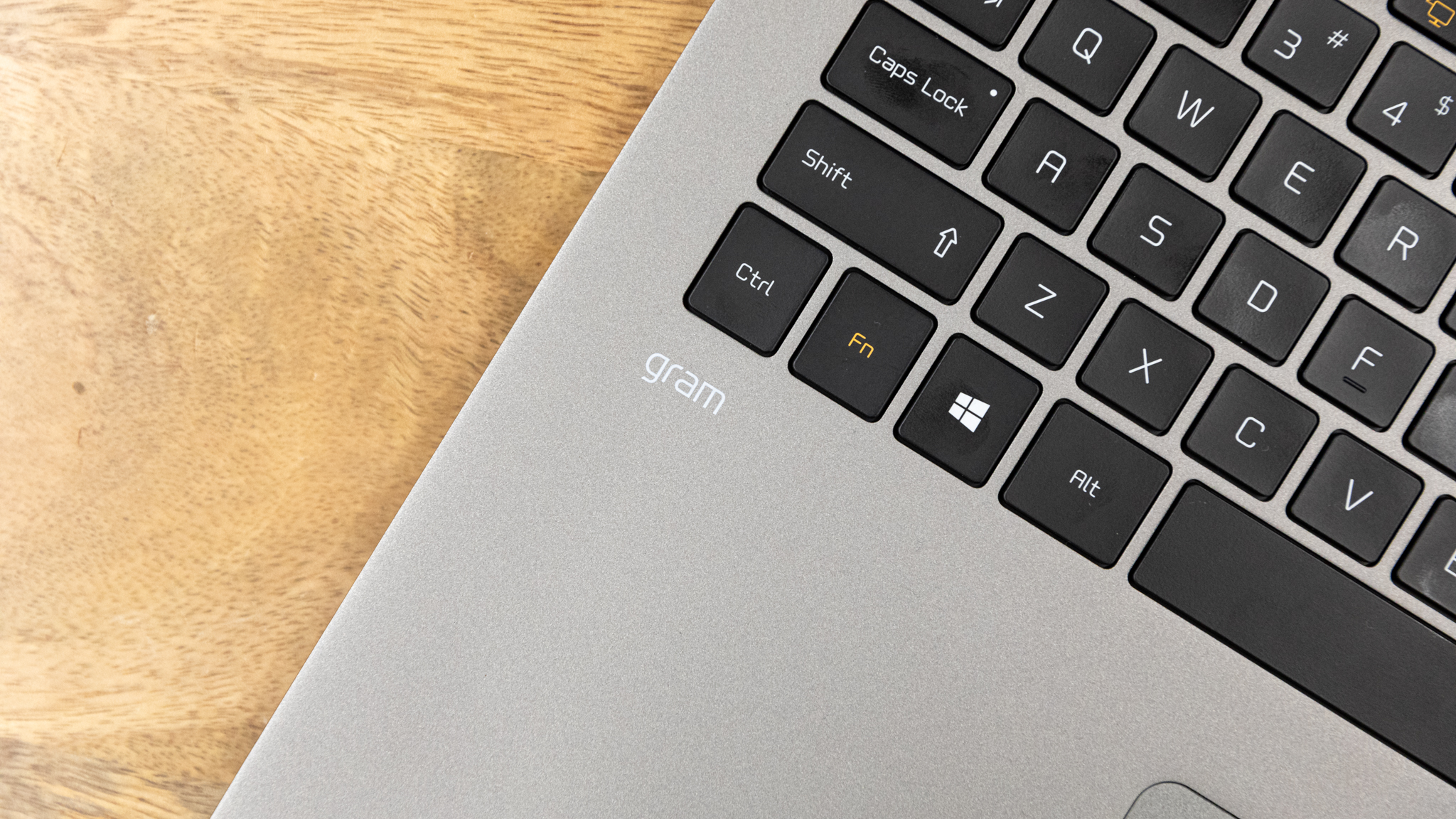
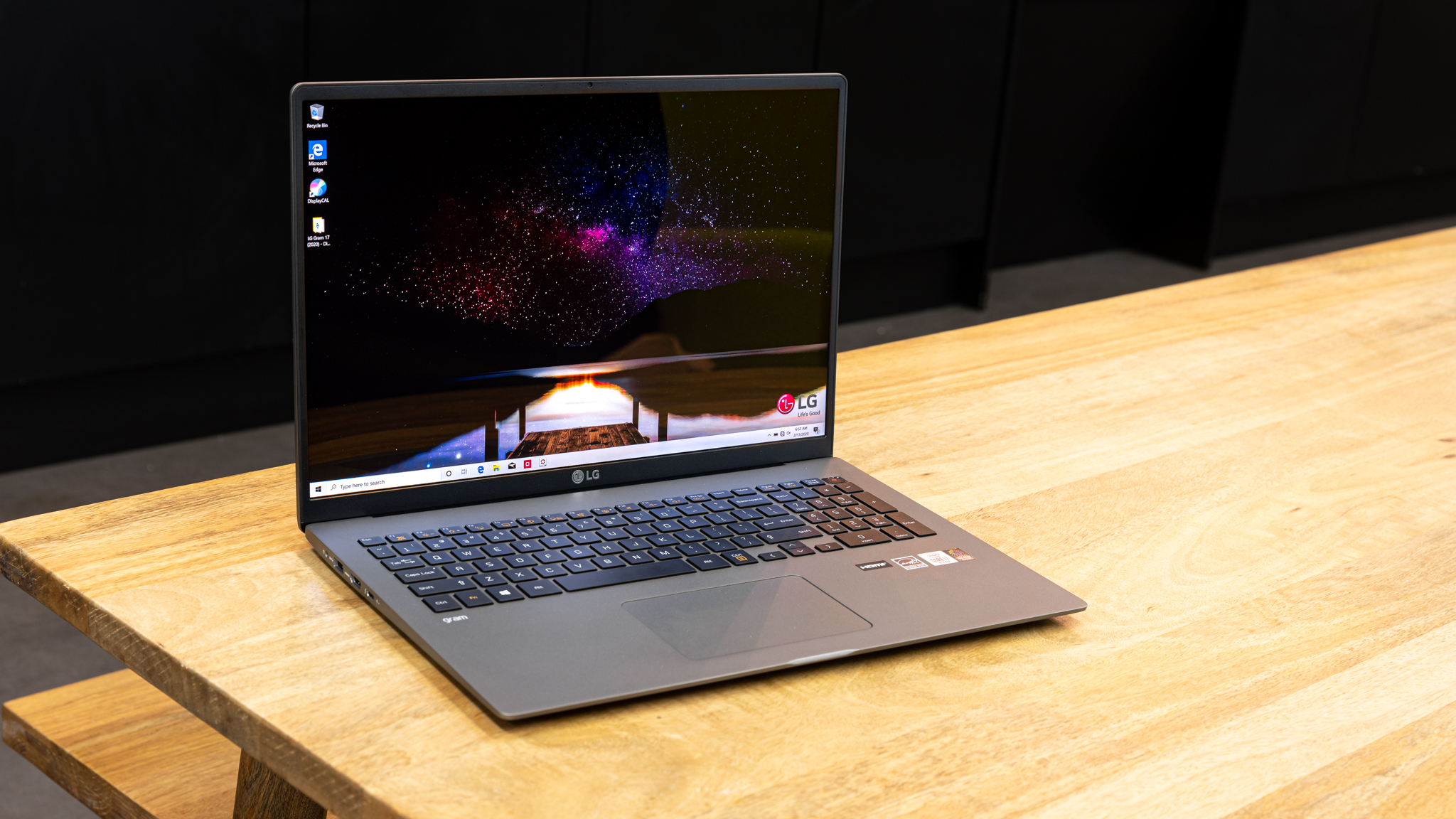
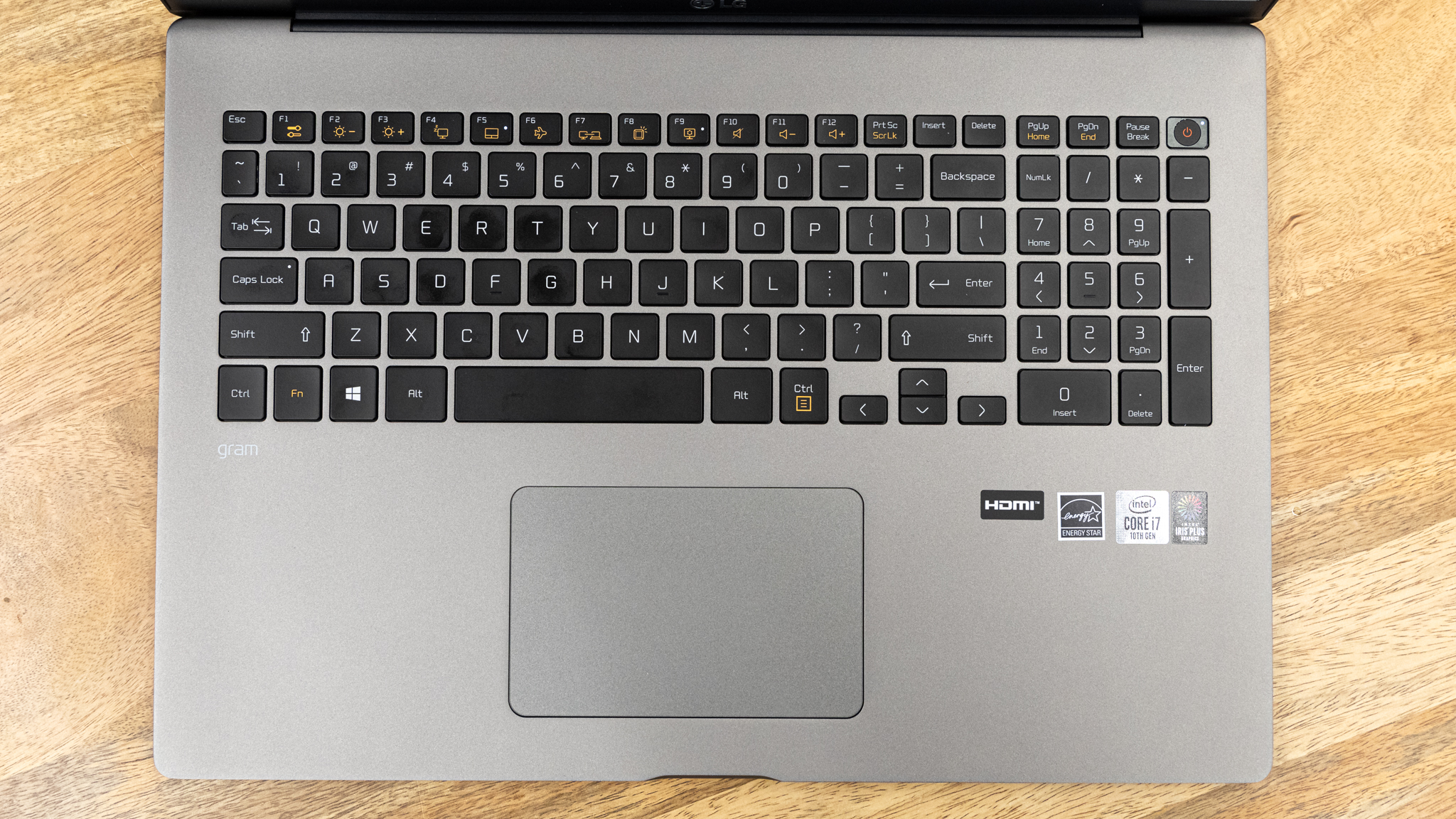
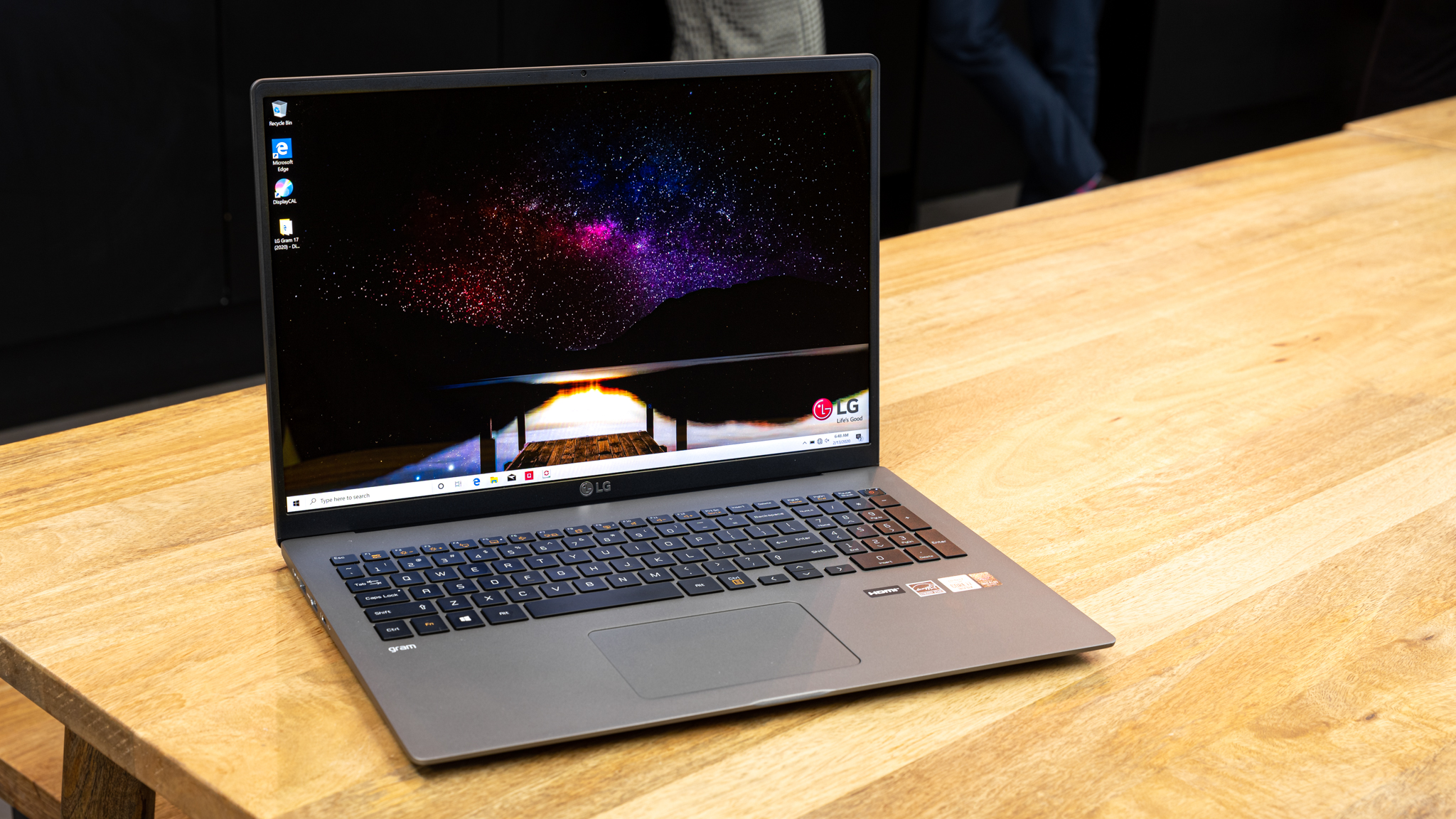
It’s an immutable law of nature that you can’t fit a big screen into a small chassis – but the LG Gram 17 (2020) has given it a good go. It’s about as compact as a 17in laptop could be and at 1.35kg weighs a fraction less than a 13.3in Apple MacBook Pro. In keeping the size and weight down to a minimum, however, LG has made a few design trade-offs. The question is whether they matter to you.
LG Gram 17 (2020) review: Design
LG advertises the Gram 17 as a 17in laptop with a “15.6in-class body size”. That’s optimistic, but with a footprint of 381 x 267mm and a thickness of only 18mm, it’s trim. We were comfortable using the Gram 17 on our lap while sitting on the sofa. And while it weighs about as much as a typical 13in laptop, because the Gram 17’s chassis is so much larger it’s far less dense, which makes it feel almost supernaturally light. Even the power supply adds only 274g, including the UK plug.
That lightness comes at the expense of sturdiness. The casing is made of magnesium alloy, as is the HP Elite Dragonfly, but feels flimsier, with noticeable flex in the lower half of the shell. LG assures us that the Gram 17 is MIL-STD-810G-certified against shock, pressure, temperature and dust, but even so it feels like it will quickly pick up scratches and scuffs, and we wouldn’t like to swear that it will survive if you accidentally step on it.
The casing is plain, other than the word “gram” embossed in silver on the outside of the lid; aside from that, a flat, silver-grey finish is the order of the day, with the only touch of colour provided by orange icons that adorn certain keytops.
Happily, while the design lacks visual inspiration, it’s not short on practicality. On the left-hand side, a full-sized HDMI port rubs shoulders with a USB 3.1 socket and a USB-C connector with Thunderbolt 3 support; on the opposing edge sit two more USB 3.1 ports, plus a microSD slot, a 3.5mm headset jack and a Kensington lock slot.

LG also includes a USB-to-Ethernet adapter in the box, but this is only rated for 100Mbits/sec, and using it will tie up the laptop’s sole USB-C connector: we suggest you invest a tenner in a third-party Gigabit version with a Type-A plug instead.
The obligatory webcam is set into the top bezel, and while it only has a resolution of 720p it produces nice, noise-free video and copes well with bright or dim lighting conditions. The webcam isn’t Windows Hello- compatible, but you can quickly sign in using the fingerprint reader embedded into the power button at the top-right of the keyboard.
LG Gram 17 (2020) review: Keyboard and trackpad
We’ve noted that the casing has some flex to it, and that carries over to the keyboard. If you’re a key-thumper, you’ll notice that the whole central area of the keyboard caves inward slightly as you type; even in normal use, we found it almost impossible to hit the spacebar without experiencing a bit of spring in the backplate.
Despite this, we found the LG Gram 17 pleasant to type on. The inclusion of a numeric keypad means you must position your hands a bit left of centre, but the keys have a positive (if lightweight) action, with two levels of backlighting to find keys in dark environments.
It helps that almost all of the keys are of a decent size. Some are smaller than others, including the Ctrl, Fn and Windows keys to the left of the spacebar, and the entire numeric pad at the right of the main keyboard, but they haven’t been shrunk far enough to trip you up. The only real irritation is the half-height cursor keys, but those are par for the course on laptops.

At 12cm across, the touchpad is spacious enough that you can drag the mouse pointer from one edge of the screen to the other without running off the edges. We found it responsive to drags, taps and multi-finger gestures too. Our only criticism is, again, to do with sturdiness: when you physically press down to click in the lower left or right corner, the plastic continues to bend well past the clicking point.
LG Gram 17 (2020) review: Display
The Gram 17’s big selling point is its screen, an IPS panel measuring a full 17in across the diagonal, with a 16:10 aspect ratio that translates to dimensions of 367mm x 229mm. It feels like a natural shape for a display of this size: neither too wide nor too tall, with unobtrusive bezels at the top and sides measuring 10mm and 6mm respectively.
As soon as you lift up the lid you’re struck by how bright and lively the picture looks. We measured a maximum brightness of 372cd/m2 and a contrast ratio of 1,522:1, and while those might not be world-beating figures, they hold up well next to other laptops in the £1,000-plus market.
Nor is this one of those screens that emphasises “pop” at the expense of colour accuracy. The Gram 17’s display covers a creditable 95.1% of the sRGB gamut, with an excellent average Delta E of 1.35. That means the colours you see onscreen will look close to how they’re “supposed to”, according to industry standards.
We have a few reservations, though. First, its glossy coating adds vibrancy, but it also makes the screen susceptible to distracting reflections. Second, LG opts for a relatively lowly 2,560 x 1,600 resolution. This still gives you a lot more workspace than a regular Full HD screen, but it translates to a mediocre pixel density of 178ppi: it wouldn’t be fair to say it looks blocky, but it doesn’t have the impeccable smoothness of a “Retina”-class display, which would have a density of around 220ppi.

A final thing to be aware of is that the screen has no touch support. That may not be a big issue for the intended market, but it can be nice to physically prod at a web page now and then.
Audio is a mixed bag. LG proudly advertises that the Gram 17 supports DTS:X Ultra audio processing, but the built-in speakers are far too weedy to take advantage of it: they go loud enough to watch YouTube from across the room, but there’s no low-end whatsoever. Plug in a pair of headphones (or hook up an external audio system), however, and the tech comes into its own, providing a lovely smooth, rich sound. You can even use a handy wizard to generate custom EQ settings that are tailored to your headphones and ears.
LG Gram 17 (2020) review: Specs and performance
The original LG Gram 17 was driven by an eighth-generation Core i7-8565U processor, while the new one features a tenth-generation i7-1065G7. That should be a step up, but with little active cooling the CPU is throttled to under 2GHz when pushed with a big multithreaded task.
As a result, the Gram 17 delivers desktop performance that’s a step behind most other laptops built on similar internals. For instance, the comparably specified Microsoft Surface Laptop 3 13.5in scored 104 in our benchmarks compared to the LG Gram’s 70. Even last year’s LG Gram 17 was faster, with an overall score of 90.
Still, a score of 70 represents ample power for desktop tasks: even video editing is feasible. The 16GB of RAM should ensure that the system runs smoothly when the going gets tough. And the Gram 17 does well when it comes to short, sharp bursts of activity, which can be completed before the CPU starts to overheat: in our photo-editing benchmark, it scored an impressive 130.
What about graphical grunt? The CPU’s G7 suffix indicates that it has the most powerful version of Intel’s Iris Plus graphics, but it lagged behind systems based on the same hardware: a score of 40fps in the GFXBench Car Case (1080p, offscreen) is only 7fps ahead of last year’s model and around 13fps behind the Surface Laptop. With numbers such as this, we’d say this laptop is suitable for casual gaming only: even in our Dirt: Showdown test, now getting on for eight years old, it managed only a just-about-playable 36.5fps at 720p.
Elsewhere, we’re happy to see that the new Gram 17 comes with a huge 1TB of solid-state storage as standard (although this is oddly supplied as two separate 512GB drives). Both SSDs are fast, especially when it comes to write speeds, which should make the system responsive when you’re working with large data sets.
The new Gram 17 also introduces a Wi-Fi 6 (802.11ax) wireless adapter. Finally, there’s one aspect of the Gram 17 that we’re pleased to say hasn’t changed and that’s its phenomenal battery life. In our video-rundown test, it put rivals to shame with a time of 10hrs 57mins.
LG Gram 17 (2020) review: Verdict
We’ve tested plenty of 17in laptops over the years, but the LG Gram 17 is the first one we’d be happy to have as my regular carry-around companion. If you’re an on-the-go internet user with an interest in graphic design or photo editing, it’s a persuasive replacement for both a desktop and a laptop.
There are compromises. Other laptops are smaller, faster and cheaper, and have sharper screens, too. But LG hasn’t skimped on the key things that define the Gram 17, namely its excellent screen, low weight and huge battery life. If you’ve the slightest interest in a big-screen laptop, we recommend you give the Gram 17 a serious look.
LG Gram 17 (2020) specifications
| Processor | Quad-core 1.3GHz Intel Core i7-1065G7 |
| RAM | 16GB DDR4-3200 RAM |
| Additional memory slots | N/A |
| Graphics adapter | Intel Iris Plus graphics |
| Storage | 2 x 512GB NVMe SSDs |
| Screen size (in) | 17in |
| Screen resolution | 2,560 x 1,600 non-touch IPS display |
| Pixel density (PPI) | 178ppi |
| Screen type | IPS |
| Touchscreen | N/A |
| Optical drive | N/A |
| Memory card slot | Micro-SD card reader |
| Graphics outputs | Thunderbolt 3, HDMI |
| Other ports | 3 x USB-A 3.1 |
| Web Cam | Full HD webcam |
| Wi-Fi | 2x2 MIMO 802.11ax Wi-Fi |
| Bluetooth | Bluetooth 5 |
| NFC | N/A |
| Dimensions, mm (WDH) | 381 x 267 x 18mm (WDH) |
| Weight (kg) - with keyboard where applicable | 1.35kg |
| Battery size (Wh) | 80Whr battery |
| Operating system | 1yr RTB warrant |
Get the ITPro daily newsletter
Sign up today and you will receive a free copy of our Future Focus 2025 report - the leading guidance on AI, cybersecurity and other IT challenges as per 700+ senior executives
Darien began his IT career in the 1990s as a systems engineer, later becoming an IT project manager. His formative experiences included upgrading a major multinational from token-ring networking to Ethernet, and migrating a travelling sales force from Windows 3.1 to Windows 95.
He subsequently spent some years acting as a one-man IT department for a small publishing company, before moving into journalism himself. He is now a regular contributor to IT Pro, specialising in networking and security, and serves as associate editor of PC Pro magazine with particular responsibility for business reviews and features.
You can email Darien at darien@pcpro.co.uk, or follow him on Twitter at @dariengs.
-
 ‘Phishing kits are a force multiplier': Cheap cyber crime kits can be bought on the dark web for less than $25 – and experts warn it’s lowering the barrier of entry for amateur hackers
‘Phishing kits are a force multiplier': Cheap cyber crime kits can be bought on the dark web for less than $25 – and experts warn it’s lowering the barrier of entry for amateur hackersNews Research from NordVPN shows phishing kits are now widely available on the dark web and via messaging apps like Telegram, and are often selling for less than $25.
By Emma Woollacott Published
-
 Redis unveils new tools for developers working on AI applications
Redis unveils new tools for developers working on AI applicationsNews Redis has announced new tools aimed at making it easier for AI developers to build applications and optimize large language model (LLM) outputs.
By Ross Kelly Published
-
 Google layoffs continue with "hundreds" cut from Chrome, Android, and Pixel teams
Google layoffs continue with "hundreds" cut from Chrome, Android, and Pixel teamsNews The tech giant's efficiency drive enters a third year with devices teams the latest target
By Bobby Hellard Published